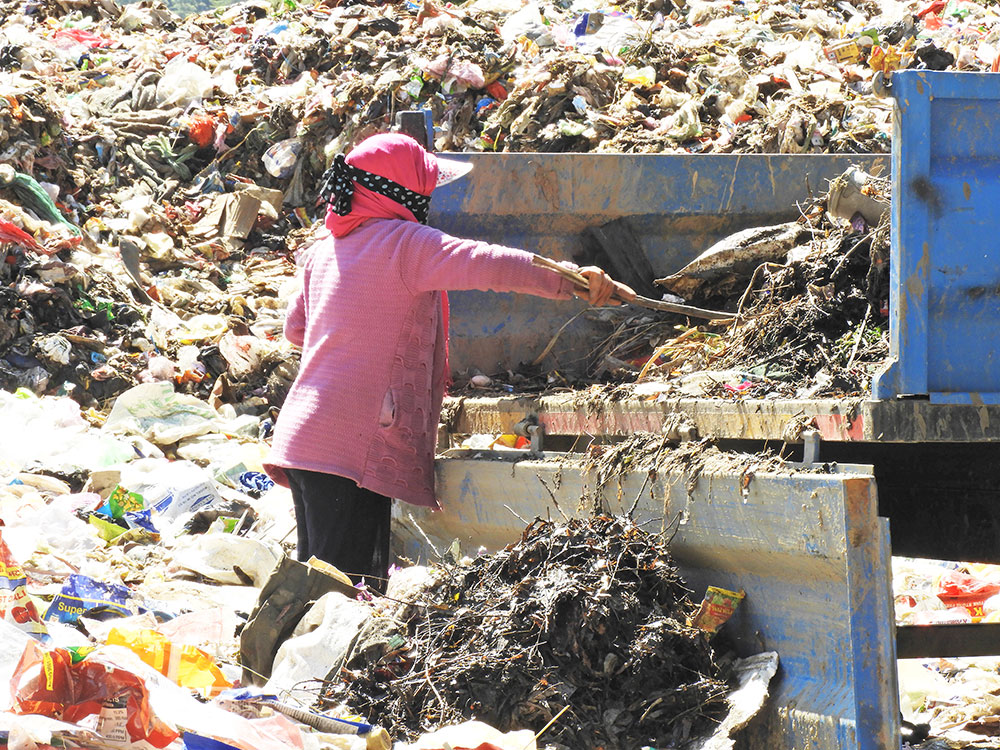Yangyel Lhaden
Implementing the first phase of waste management flagship programme (WMFP), Thimphu thromde is procuring vehicles for waste collection, constructing waste drop-off centres and material recovery facility (MRF) and planning and designing integrated waste management facility.
The programme was launched on June 2, 2019, with the ambition of going zero-waste, where 80 percent of waste going to the landfill will be reduced to less than 15 percent by the year 2030.
Thimphu thromde’s chief environment officer, Sonam Desel, said thromde managed solid waste and a waste management plan was successful when waste generated from source was segregated, recycled, treated, and disposed through a systematic chain.
She said that through the flagship programme, they would segregate waste from source, deploy different vehicles to collect dry, wet and household hazardous waste, segregate at MRF and recycle waste, compost wet waste, incinerate hazardous waste so that only the waste which cannot be utilised goes to landfill.
Sonam Desel said all infrastructures and management of waste management would be outsourced to private individuals.
Waste collection vehicles
With limited vehicles outsourced to waste service providers now, there is no separate vehicle to cater to different types of waste.
Sonam Desel said although individuals might be segregating waste at source, it was not helpful as waste was mixed without a separate vehicle for different waste. “When different types of waste get mixed, it becomes hazardous.”
She said compactor trucks, which are not leak proof, collected wet waste presently.
Through the flagship programme one electric compactor, four dumper truck for wet waste, one street sweeper (vacuum), one hazardous waste collection vehicle, and one lifter is being procured.
Sonam Desel said the waste collection vehicles are on the way. “Due to the pandemic, vehicles are stuck in one of the international ports.”
She said the Japanese government is supporting eleven small compactors, six medium compactors, three container carriers, 24 containers, one bulldozer and four mechanical tool sets.
Sonam Desel said the waste collection vehicles would be color coded according to the type of waste.
Drop-off centres
Thimphu thromde constructed nine drop-off centres in different zones.
Drop off centres is a disposal site in designated areas so that people could drop off their waste if they miss the waste collection vehicles.
Sonam Desel said it is a challenge to come up with waste collection timing which was convenient to everybody.
She said people complained of waste collection timing, but the current timing was the best thromde could do. “With the drop off centre people can dispose waste anytime based on their convenience.”
The drop off centre has three compartments for wet, dry and household hazardous waste. It has an open window from where an individual can dispose waste and a shutter from where waste collection vehicle can enter and collect the waste. A caretaker will be in charge of the drop off centre.
Sonam Desel said when a waste collection vehicle collects household waste in an area, they would also collect waste from drop off centres so that waste will not remain in the drop off centre for more than two days.
With the existing drop off centre in Kelki, there will be 10 drop off centre in Thimphu.
MRF centre
Sonam Desel said after waste is segregated from source and collected by waste collectors, it would be segregated at MRF so that those that can be recycled are segregated.
She said construction of MRF at Taba was awarded to a contractor and the existing MRF with waste collection service providers would be upgraded. “MRF in Taba is going to be a big structure where there would be a conveyor, magnetic belt and plastic blower to segregate waste.”
Integrated waste management facility
In Memeylakha, 48.7 acres of land is identified to construct an integrated waste management facility where there will be sanitary landfill, recycling plant, stockyard, compost or biogas, construction and demolition plant and incineration plant.
Sonam Desel said thromde, in consultation with National Environment Commission, is designing and planning integrated waste management facility. “With the completion of integrated waste management facility, the existing landfill would be rehabilitated.”,
She said it was expected waste going to the landfill would be reduced by manifolds with waste utilised from MRF and recycling plants.
Sonam Desel said WMFP was being implemented phase wise as it was not easy to implement all components at a time. “It is important all infrastructures are in place when trial for WMFP rolls out in Thimphu as all the processes of waste management was dependent on each other.”
Edited by Tashi Dema


